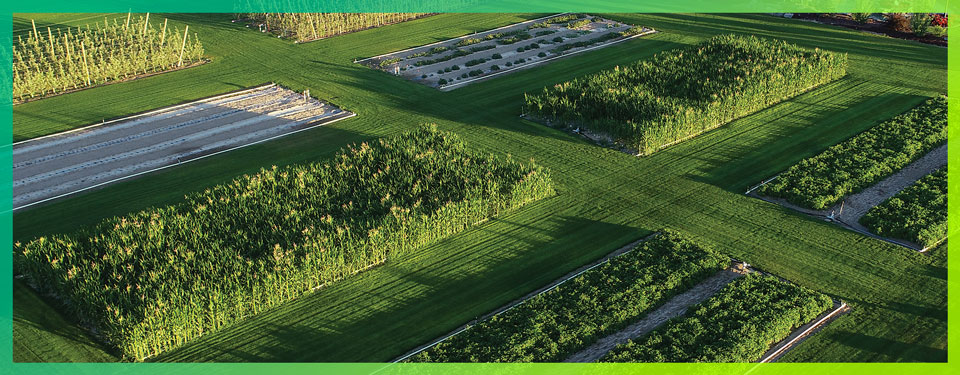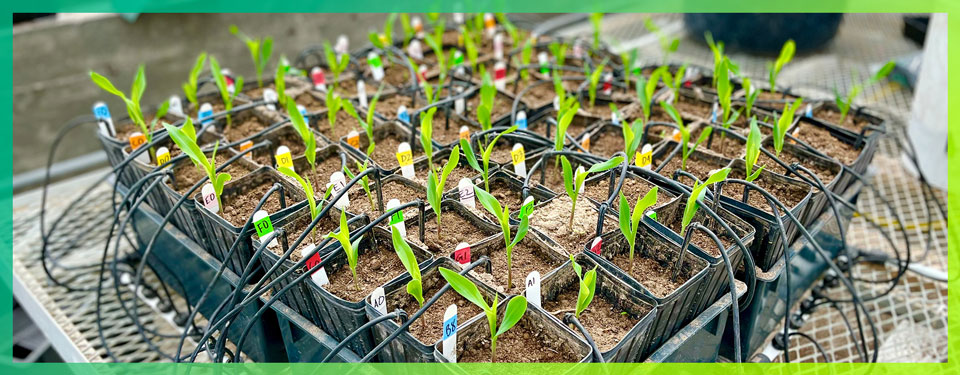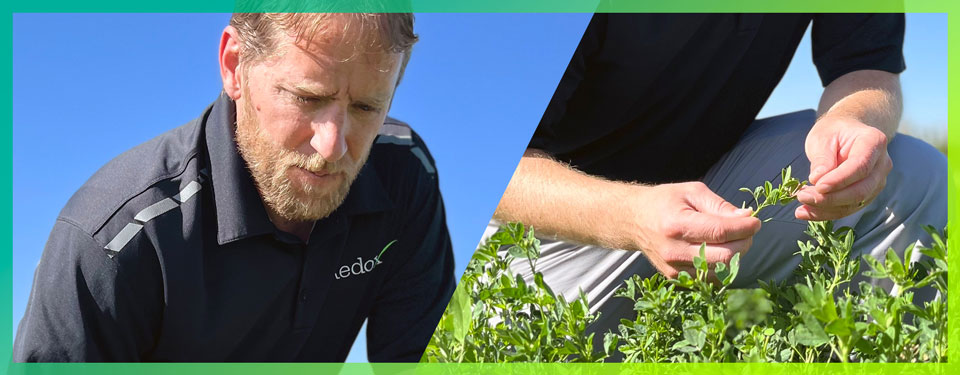Throughout the United States and in many countries, farmers are successfully incorporating Redox Bio-Nutrients products to help maintain and enhance their soil, plants, crop quality, yields, and storability. Having our products as part of a farmer’s toolbox is important considering the current challenges of high fertilizer costs and market uncertainty.
A key aspect of the scientific research we do is providing empirical evidence (e.g., data) that demonstrate programs that growers can adopt to produce more food with fewer inputs.
At our company headquarters in Burley, Idaho, we have a research team that utilizes 20 acres of available farmland to mimic grower scenarios on various perennial and row crops. Year to date, 24 trials have been conducted this growing season on corn, alfalfa, honey crisp apples, tomatoes, table grapes, and turf. The value of turf is easily overlooked as the single largest irrigated agricultural crop, but Redox Bio-Nutrients is providing nutrient stewardship programs to aid golf course maintenance as well.

At corporate headquarters, we also utilize a sophisticated greenhouse that allows for year-round trials. A second greenhouse is currently under construction to decrease the feedback time needed to adequately test up-and-coming technologies, identify appropriate practices, and set new standards in the industry for nutrient stewardship.
To better evaluate root morphology and root mass in later growth stages of crops, we are also constructing a large hoop house at corporate headquarters to contain 36 grow-in boxes that are each 11 square feet and 3 feet deep. Grow-in boxes will allow crop-destruct evaluations of roots for time durations longer than a greenhouse and plant maturity beyond the capacity of a 3-gallon pot. For most 3rd-Party research, standard root evaluations are taken at 45-60 days when plants are still young and have faced limited environmental pressure and no reproductive growth. Grow-in boxes both extend the plant life cycle and expose plants to true-to-farm environmental stressors.

Lastly, we currently incorporate six instrument protocols to understand physiological responses of plants as they mature under abiotic stressors. Some of these measurements are disruptive if not altogether destructive which can be prohibitive in many research settings. These measures and instruments allow us to understand the mechanisms and timing for why our programs can increase yield and quality of crops.
We have learned a great deal from completed trials on the Research Farm including when things do not go as expected or when mistakes are made. It is not uncommon for unexpected results to strengthen our understanding and scientific evaluation of our products and ultimately benefit growers. We regularly receive feedback on our processes from a diversity of experts including academics, 3rd-party researchers, and crop advisors internal and external to our company.
Like many on our dedicated team, I grew up on an agricultural farm. In my case, it was primarily a potato, sugar beet, and wheat farm in Idaho. I also worked on and around neighbor farm fields while growing up, especially bucking hay! Seeing firsthand what it takes for a grower to be successful provides clarity for my work. Knowing the challenges and needs in the field impart a clear direction for our approach. We use applied science, meaning we ask and answer the most pressing questions for our customers under the same conditions that they face – true to farm.

An umbrella concept for this process is the four Rs of nutrient stewardship: the right source of fertilizer or nutrients, the right rate, the right time, and in the right place. We are constantly controlling for these variables in our research and increasing our understanding in the placement of our products.
We know we are on the right track when we consistently get the same plant response under different growing conditions. And even better, when we consistently use less resources to create more food and higher quality food because we understand the underlying ecology of plants, pests, soil, microbes, and the plant-growing climate.
It’s a great feeling to have an influential part in agriculture. When farmers succeed, we all win.
Questions? Want to know more about An Inside Look at the Redox Research Farm?
Subscribe to receive our Redox Bio-Nutrients updates